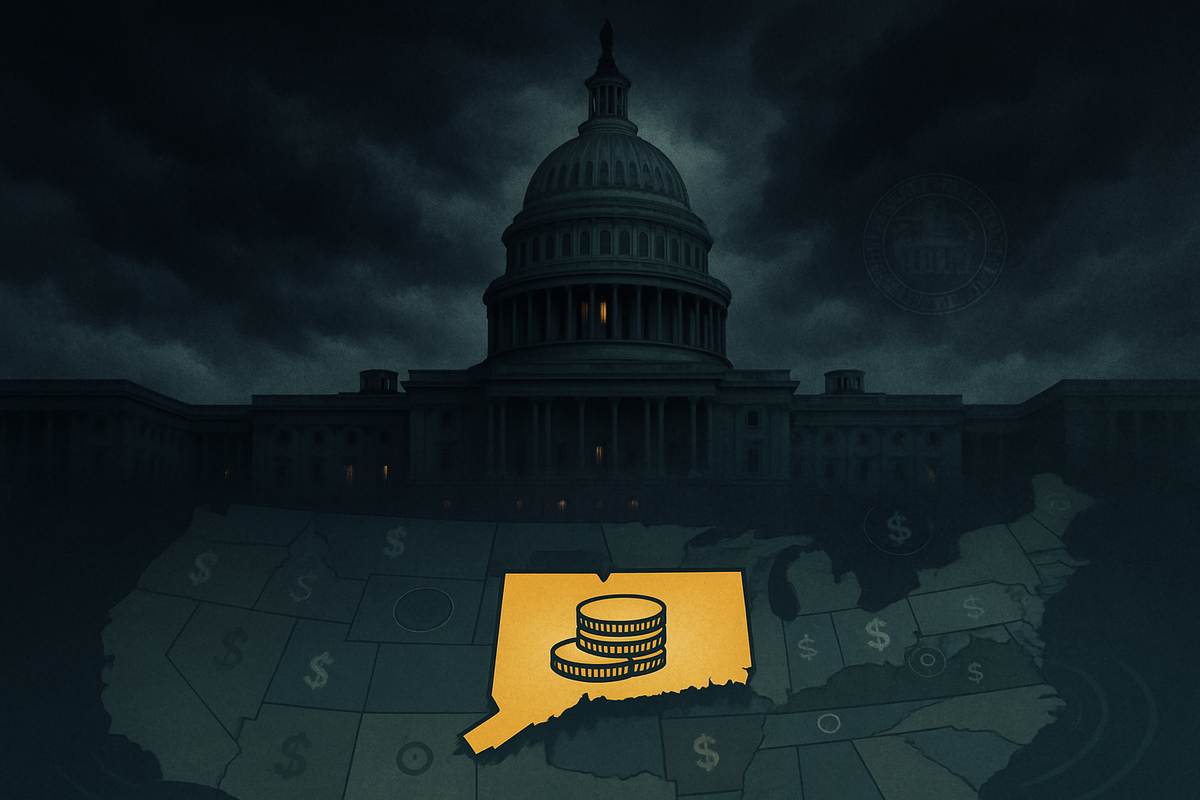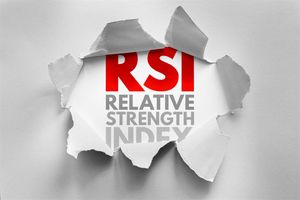
As the specter of a federal government shutdown once again casts a long shadow over the nation's economy, states across the U.S. are bracing for significant financial disruptions. The potential for a cessation of non-essential federal services and funding has profound implications for state budgets, which often rely heavily on federal grants and reimbursements for critical programs. In response to these looming shortfalls, states are actively exploring contingency plans, with Connecticut emerging as a prime example, considering the deployment of its substantial reserve fund to ensure the continuity of vital services for its residents. This precarious situation also places the Federal Reserve on high alert, as a shutdown can severely impair its ability to monitor economic health and make informed monetary policy decisions.
States Face Funding Abyss as Federal Gridlock Threatens Essential Services
The current discourse surrounding a potential federal government shutdown, as observed around October 1, 2025, highlights a recurring challenge for the nation's economic stability. A federal shutdown triggers a cascade of negative effects, beginning with the immediate furlough of hundreds of thousands of federal employees and delayed payments for essential workers, directly impacting household incomes and consumer spending. Beyond individual livelihoods, businesses reliant on federal contracts face paused projects and delayed payments, particularly affecting sectors with significant government exposure. Critical government services, from permitting and licensing to small business loan processing and IRS income verification, can grind to a halt, creating widespread economic friction. National parks and museums may close, further dampening tourism and local economies.
For state governments, the implications are even more direct and often immediate. Federal funding, which underpins a vast array of state-administered programs in health, human services, agriculture, and housing, faces potential interruption. Programs like the Supplemental Nutrition Assistance Program (SNAP) and the Special Supplemental Nutrition Program for Women, Infants, and Children (WIC), along with federal block grants for social services, are particularly vulnerable. This creates an increased burden on states, which see a rise in demand for their services precisely when federal support diminishes. Historically, while some past shutdowns led to federal reimbursement for state-covered costs, there is no guarantee of such compensation, forcing states to make difficult budgetary decisions.
Connecticut, however, finds itself in a relatively stronger position compared to many of its counterparts, thanks to robust financial planning. Governor Ned Lamont has indicated a readiness to utilize the state's substantial budget reserve fund, reportedly standing at $6.3 billion, coupled with a projected general fund surplus. This financial stability allows Connecticut to potentially absorb temporary federal funding losses. The state's rationale for tapping into these reserves is clear: to ensure the uninterrupted delivery of critical assistance, protect vulnerable populations, and maintain essential services. For instance, Connecticut has made provisions to sustain WIC benefits through emergency state reserves, and SNAP benefits are anticipated to continue through October with existing federal funds. Moreover, the state's Medicaid reserves are estimated to last well into February or March of 2026, offering a significant buffer. The proactive stance of Connecticut officials in contingency planning underscores the severity of the potential federal funding gaps and the critical need to safeguard vital programs like energy assistance and Head Start. The key players involved are the federal legislative and executive branches responsible for budget appropriations, state governors and legislative bodies making contingency plans, and ultimately, the millions of citizens who rely on these services. The financial markets typically react with caution and increased volatility during shutdown threats, reflecting the uncertainty introduced into the economic outlook.
Market Winners and Losers: Navigating the Shutdown's Economic Crosscurrents
A federal government shutdown creates a complex tapestry of economic winners and losers, with its impact ripping across various public companies and sectors. The most immediate and significant casualties are often federal contractors, many of whom are publicly traded entities. Companies like Lockheed Martin (NYSE: LMT), Northrop Grumman (NYSE: NOC), and Raytheon Technologies (NYSE: RTX), which derive substantial revenue from government contracts, face delayed payments and potential stop-work orders, leading to cash flow issues and operational disruptions. Similarly, businesses awaiting crucial federal regulatory approvals, such as those in the biotech sector (e.g., companies waiting on FDA drug approvals) or energy sector (e.g., firms seeking EPA permits), experience significant delays that can stall product launches, project developments, and M&A activities. The financial services industry also feels the pinch as SEC reviews for IPOs and other transactions slow down.
Small businesses, particularly those reliant on SBA loans, suffer immensely as new loan processing halts, potentially costing the economy millions in daily financing. The travel and tourism industry faces headwinds from reduced federal worker travel, potential delays at airports due to TSA staffing issues, and the closure of national parks and other federal attractions. This impacts airlines like Delta Air Lines (NYSE: DAL) and United Airlines Holdings (NASDAQ: UAL), as well as hospitality companies. Furthermore, the shutdown can lead to a "data drought" as federal agencies cease publishing key economic indicators, leaving investors and policymakers "flying blind."
While the overall economic sentiment is negative, some entities might experience limited, indirect benefits. Grocery stores and warehouse clubs like Walmart (NYSE: WMT) and Costco Wholesale (NASDAQ: COST) might see a slight uptick in sales as federal workers stock up or adjust their spending habits. Historically, the broader stock market, as represented by the S&P 500 (INDEXSP: .INX), has often shown resilience during short shutdowns, sometimes remaining flat or even posting slight gains, as investors may perceive these events as temporary political impasses rather than fundamental economic crises. Moreover, a GDP rebound often follows the resolution of a shutdown, especially if furloughed workers receive back pay, mitigating some of the initial economic drag.
Wider Economic Significance: A Looming Test of Fiscal Resilience and Federal-State Harmony
The ongoing threat of a federal government shutdown, a recurring feature of the U.S. political landscape, represents more than a temporary administrative inconvenience; it's a profound test of the nation's fiscal resilience and the intricate balance of federal-state relationships. This event, currently under discussion around October 1, 2025, fits into broader trends of political gridlock and polarized fiscal policy, where disagreements over spending and budgetary priorities often lead to legislative impasses.
Economically, shutdowns consistently result in a reduction of Gross Domestic Product (GDP) growth, with estimates suggesting a decline of 0.1 to 0.2 percentage points for each week of closure. While some of this lost economic activity may be recouped upon resolution, a portion can be permanently lost, as evidenced by the 2018-2019 shutdown which led to an estimated $3 billion in permanent economic growth forfeiture. Beyond the headline GDP figures, the erosion of consumer and investor confidence is a significant, if less tangible, consequence. Businesses and households become more cautious, potentially curbing spending and investment decisions, particularly in an economic climate already grappling with inflation and labor market uncertainties. Crucially, the cessation of economic data releases from federal agencies creates a "market data blind spot," leaving policymakers, including the Federal Reserve, and investors without vital information to assess the true state of the economy.
The ripple effects extend significantly to other states, challenging the very fabric of federal-state partnerships. States face delayed federal transfers for critical programs like Medicaid and education, which can strain state budgets and potentially impact their municipal bond ratings and credit outlooks. Grant funding for a wide array of state and local projects, as well as for universities and non-profit organizations, can be disrupted, forcing these entities to scale back or pause essential work. Social safety net programs, particularly those for nutrition like SNAP and WIC, become vulnerable if a shutdown is prolonged, placing immense pressure on states to step in and maintain these vital services for their most vulnerable citizens. This dynamic underscores how federal political dysfunction can directly undermine trust and cooperation across different levels of government.
From a regulatory and policy standpoint, a shutdown creates widespread bottlenecks. Agencies like the Securities and Exchange Commission (SEC), Food and Drug Administration (FDA), and Environmental Protection Agency (EPA) operate with minimal staff, leading to significant delays in approvals for IPOs, drug trials, environmental permits, and mergers and acquisitions. This regulatory paralysis can stifle innovation and economic activity across sectors. Furthermore, the very concept of "essential services" is tested, with only those functions vital for protecting life and property continuing, while many other critical, but "non-excepted," services are halted. Historically, the U.S. has endured numerous shutdowns, from the two totaling 26 days in 1995-1996 stemming from budget disagreements between President Clinton and Congress, to the 16-day shutdown in 2013 over the Affordable Care Act, and the record 35-day partial shutdown in 2018-2019 over border wall funding. While short shutdowns often see a quick reversal of direct macroeconomic effects, the cumulative impact, particularly for federal contractors who rarely receive back pay, and the long-term damage to public confidence and governmental capacity, remain significant concerns.
What Comes Next: Navigating Uncertainty and Building Resilience
The trajectory following a federal government shutdown, whether short-lived or prolonged, presents a spectrum of possibilities and demands strategic pivots from both states and businesses. In the short term, the immediate effects are clear: hundreds of thousands of federal employees face furloughs or work without pay, leading to a direct hit on household spending. Government services deemed "non-essential" cease, causing disruptions in everything from national park access to visa processing and regulatory reviews. This inevitably creates an economic slowdown, with GDP growth experiencing an immediate drag. Financial markets, sensing the uncertainty, typically exhibit volatility, often with a flight to safe-haven assets like gold. A critical challenge is the "data blackout," as federal agencies suspend the release of vital economic statistics, leaving policymakers, including the Federal Reserve, to make decisions in a "data desert."
Should the shutdown extend into the long term, the economic damage deepens, potentially leading to a more substantial and less recoverable reduction in GDP. Beyond the immediate financial costs, prolonged impasses erode public trust in government and severely diminish its capacity, risking a "brain drain" as skilled federal employees seek more stable employment. Recent threats of permanent layoffs, rather than temporary furloughs, by the current administration suggest a more aggressive stance that could lead to lasting reductions in federal workforce and programs. Regulatory backlogs could take months to clear, stifling business innovation and investment, while social safety net programs face severe funding shortfalls, placing immense pressure on states to intervene.
In this environment of uncertainty, states must adopt strategic pivots. Those with robust reserves, like Connecticut, are poised to draw upon these funds to maintain essential services, especially for vulnerable populations. Prioritizing critical public health, safety, and welfare programs becomes paramount. States may also explore partnerships to keep certain federal facilities operational or prepare for delays in new federal grants and technical assistance.
For businesses, resilience is key. Companies heavily reliant on federal contracts or regulatory approvals must consider diversifying their revenue streams into the private sector or international markets. Strengthening financial resilience through robust cash reserves and credit lines is crucial to weather payment delays. Businesses should also assess their supply chains for dependencies on government infrastructure and engage proactively with government relations to stay informed and navigate regulatory challenges. Scenario planning, modeling various shutdown durations, and stress-testing financial projections are essential. Industries requiring federal certifications, such as tech companies needing FCC approvals, may need to accelerate processes when agencies are operational or explore non-U.S. markets.
The market landscape shifts, presenting both challenges and limited opportunities. Challenges primarily affect government contractors, highly regulated industries (e.g., housing, technology, environmental), and the tourism/hospitality sectors. Opportunities may arise in safe-haven assets, defensive sectors like utilities and consumer staples, and for companies with minimal government exposure. Regulatory consulting services may also see increased demand.
The Federal Reserve remains a critical, albeit indirectly impacted, player. While its operations continue, the data blackout significantly complicates its ability to fulfill its dual mandate. Without timely and reliable information on employment, inflation, and GDP, the Fed risks "flying blind" in its monetary policy decisions. This uncertainty could lead policymakers to err on the side of caution, potentially holding interest rates steady even if underlying economic conditions might otherwise warrant a change, to avoid making ill-informed adjustments. This, in turn, could influence market expectations for future rate adjustments, potentially causing a market reset if the Fed's actions diverge from investor pricing. The range of outcomes spans from brief, minor disruptions to severe and lasting economic impacts, underscoring the profound stakes of federal fiscal policy.
Comprehensive Wrap-up: Navigating the Fog of Fiscal Uncertainty
The recurring threat of a federal government shutdown, exemplified by the current considerations around October 1, 2025, serves as a stark reminder of the fragility inherent in political gridlock and its profound economic ramifications. Key takeaways underscore that while short-lived shutdowns often result in a temporary drag on GDP—estimated at 0.1 to 0.2 percentage points per week—much of this economic activity can be recouped. However, federal contractors, unlike furloughed federal employees, typically do not receive back pay, leading to unrecoverable losses. A critical concern for the broader market and policymakers is the inevitable "data drought" as federal agencies cease releasing vital economic indicators, leaving the Federal Reserve and investors "flying blind." This absence of information, coupled with eroded consumer and business confidence, can create a palpable sense of market uncertainty.
Looking forward, the market outlook remains cautious. While equity markets (like the S&P 500 (INDEXSP: .INX)) have historically shown mixed, often resilient, performance during short shutdowns, companies with significant government exposure are vulnerable. Fixed income markets may see a rally in U.S. Treasuries as investors seek safe havens, and municipal bonds, particularly from fiscally sound states like Connecticut, could also offer refuge. The U.S. dollar may experience weakening, and initial market volatility, often amplified by algorithmic trading, is expected.
The significance and lasting impact of such events extend beyond immediate financial figures. Repeated shutdowns erode public and investor trust in the efficacy of U.S. governance and fiscal stability. A prolonged impasse can lead to a "brain drain" within the federal workforce, as skilled civil servants seek more reliable employment, thereby diminishing governmental capacity and potentially leading to costly operational errors. Policy uncertainty, a direct byproduct of political discord, can deter long-term business investment and hiring. Furthermore, specific sectors, such as healthcare, face unique sensitivities, particularly if a shutdown coincides with critical policy debates like the extension of Affordable Care Act premium tax credits.
For investors navigating the coming months, a strategic and long-term perspective is paramount. Diversification across asset classes remains a fundamental defense against political and economic shifts. It is crucial to avoid emotional investing driven by political headlines, instead grounding decisions in economic data, corporate earnings, and long-term trends. Investors should monitor the duration and scope of any shutdown, as its impact is directly proportional to its length and the functions affected. While data may be scarce, paying close attention to any available or delayed key economic indicators (especially jobs and inflation reports) will be vital for assessing the economy's health. Considering defensive sectors (utilities, consumer staples) and safe-haven assets (short-duration Treasuries, gold, municipal bonds) can provide a hedge against uncertainty. It's also important to assess portfolio exposure to government contractors and other federally reliant businesses. Finally, understanding the Federal Reserve's stance is critical; its independence ensures operations continue, but a data blackout will likely lead to a cautious approach to monetary policy, potentially pausing rate adjustments to avoid uninformed decisions. Ultimately, focusing on the long-term fundamentals of high-quality businesses with resilient financials offers the best strategy for mitigating risks in an environment of fiscal uncertainty.
This content is intended for informational purposes only and is not financial advice


















